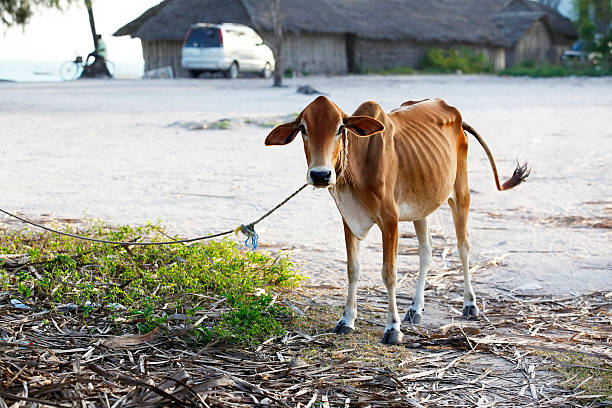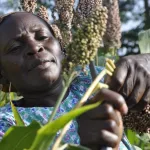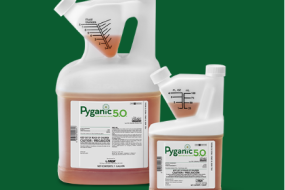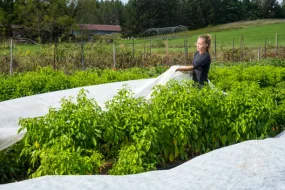If you’re a cattle farmer, ensuring the health and well-being of your herd is of utmost importance. Contagious Bovine Pleuropneumonia (CBPP) is one of the diseases that can pose a significant threat to your cattle. In this article, we’ll delve into what CBPP is, its causes, symptoms, and most importantly, how to prevent it.

What is Contagious Bovine Pleuropneumonia (CBPP)?
Contagious Bovine Pleuropneumonia, often abbreviated as CBPP, is a highly contagious and serious respiratory disease that primarily affects cattle. It is caused by a bacterium called Mycoplasma mycoides subsp. mycoides small colony (SC). This disease is also commonly referred to as lung plague, and it can lead to severe economic losses for cattle farmers if not managed effectively.
Also Read >>>> The Causes, Symptoms, and Prevention of Bovine Viral Diarrhea (BVD) for Your Healthy Cattle
Causes of CBPP
CBPP is caused by the specific strain of Mycoplasma bacteria mentioned earlier. The disease is primarily spread through respiratory secretions and droplets expelled by infected cattle. Here’s how it usually happens:

Direct Contact:
Close contact between infected and healthy cattle is the most common mode of transmission. When infected cattle cough or sneeze, they release respiratory droplets containing the bacteria. Healthy cattle inhale these droplets, and the infection spreads.
Indirect Transmission:
CBPP can also spread indirectly through contaminated objects, such as feed troughs, water sources, or equipment. If an infected animal comes into contact with these items, the bacteria can survive for a period and infect other cattle that use the same resources.
Carrier Animals:
Some cattle may become carriers of the CBPP bacteria without showing clinical signs. These carrier animals can unknowingly transmit the disease to others in the herd.
Symptoms of CBPP
Recognizing the symptoms of CBPP is crucial for early detection and intervention. Here are the common signs of CBPP in cattle:
Coughing: Infected cattle often develop a persistent, dry cough as the disease primarily affects their respiratory system.
Labored Breathing: CBPP causes inflammation in the lungs, leading to difficulty in breathing. Affected cattle may exhibit rapid, shallow breathing.
Nasal Discharge: Thick, purulent nasal discharge is another hallmark symptom of CBPP.
Fever: Infected cattle may run a fever, which is usually accompanied by a drop in appetite and a decrease in milk production in dairy cows.
Weakness and Weight Loss: As the disease progresses, cattle may become weak and lose weight due to reduced feed intake and increased energy expenditure in breathing.
Sudden Deaths: In severe cases, CBPP can lead to premature deaths in cattle, especially if left untreated.
Also Read >>>> The Causes, Symptoms, and Prevention of Bovine Viral Diarrhea (BVD) for Your Healthy Cattle
Preventing CBPP
Preventing CBPP is essential for maintaining the health of your cattle herd and safeguarding your livelihood. Here are some key measures you can take:
Vaccination: Vaccination against CBPP is one of the most effective ways to prevent the disease. Consult with your veterinarian to establish a vaccination schedule suitable for your herd.
Quarantine: Isolate new cattle arrivals for a minimum of 21 days before introducing them to your existing herd. This helps prevent the introduction of the disease.
Biosecurity: Implement strict biosecurity measures on your farm. This includes disinfecting equipment, maintaining clean water sources, and preventing contact with wildlife that can carry the bacteria.
Surveillance: Regularly monitor your herd for any signs of illness. Early detection can help prevent the disease from spreading.
Culling: Consider culling infected or carrier animals to prevent the disease from persisting in your herd.
Education: Educate yourself and your farm staff about CBPP and its prevention. Knowledge is a powerful tool in disease management.
In Conclusion
Contagious Bovine Pleuropneumonia (CBPP) is a severe disease that can have devastating consequences for cattle farmers. However, with proper preventive measures, including vaccination, quarantine, and biosecurity practices, you can reduce the risk of CBPP in your herd. Regular monitoring and early intervention are key to managing the disease effectively. By staying informed and taking proactive steps, you can protect your cattle and ensure the health and productivity of your farm.
Also Read >>>> The Causes, Symptoms, and Prevention of Bovine Viral Diarrhea (BVD) for Your Healthy Cattle












2 replies on “What Are The Causes, Symptoms, and Prevention of Contagious Bovine Pleuropneumonia (CBPP)?”
[…] Read Also >>> What Are The Causes, Symptoms, and Prevention of Contagious Bovine Pleuropneumonia (CBPP)? […]
[…] Also Read >>> What Are The Causes, Symptoms, and Prevention of Contagious Bovine Pleuropneumonia (CBPP)? […]